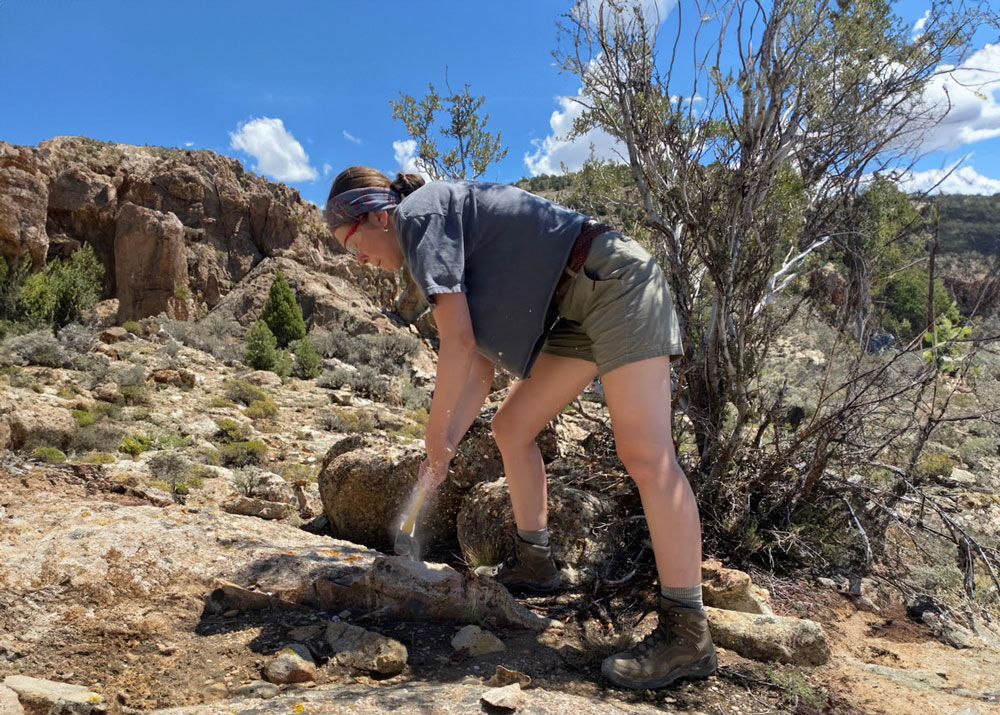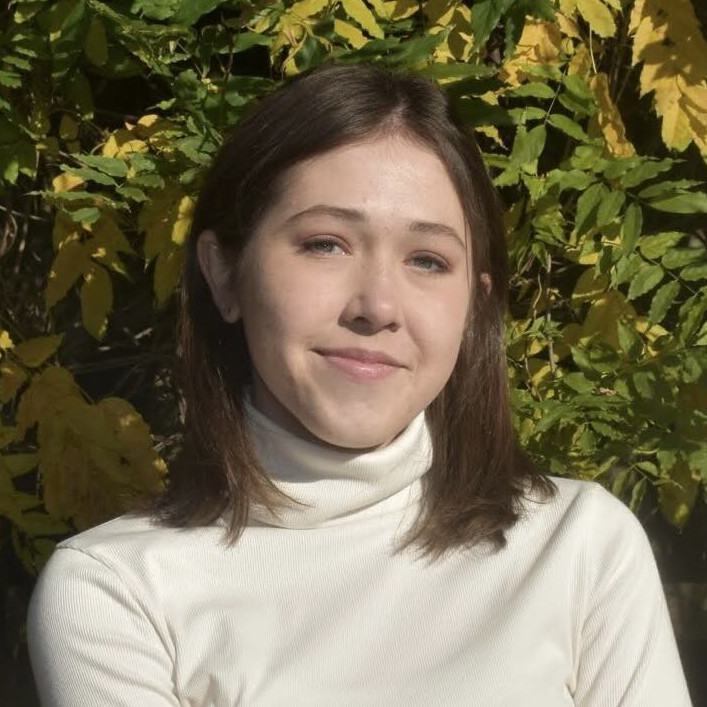Senior Geology student assesses the chemistry and evolution of magma
Juliana Curtis ‘24 analyzes granite and the feldspar crystals within to assess the inner workings of ancient volcanoes.

Senior Geology student assesses the chemistry and evolution of magma
Juliana Curtis, a senior Geology major with an Environmental Science co-major and a certificate in Geographic Information Systems, has collected rocks her entire life. Soon after coming to Miami, she discovered her interest in the hard science and quantitative analytical techniques of the Geology major.
 For her research project as a University Summer Scholar (USS), Curtis examined igneous rocks from Nevada, mainly granite, and the feldspar crystals contained within. By working collaboratively with the lab groups and graduate students of Associate Professors of Geology Mark Krekeler and Claire McLeod, Curtis learned how to operate advanced equipment.
For her research project as a University Summer Scholar (USS), Curtis examined igneous rocks from Nevada, mainly granite, and the feldspar crystals contained within. By working collaboratively with the lab groups and graduate students of Associate Professors of Geology Mark Krekeler and Claire McLeod, Curtis learned how to operate advanced equipment.
“The crystals that I was looking at through a scanning electron microscope (SEM) were like five centimeters long and huge,” she said. “Essentially, we take a slice of the rock and then shave it down to just 30 microns, creating a thin section.”
Curtis used the thin sections of these feldspar crystal samples to examine the mineral inclusions that were present, allowing her to assess the original magma in what are now extinct volcanoes. The samples that she took in Nevada were located extremely close to a silver mine.
“When a volcano essentially dies and stops erupting, the granite is usually what is left over in the volcano’s plumbing system,” Curtis said. “The material on top has essentially eroded away, and we can use the feldspar crystals inside the granite to assess the makeup of the original magma.”
Curtis explained that her research will not only set up additional research for future Miami students, but it will also help the general public.
“We can use the large feldspar crystals to help assess where silver and other economic interests are being held,” she said, adding that feldspars can sometimes also contain valuable rare earth elements.
Curtis said that she loves Miami’s Geology and Environmental Earth Science program, and all of her research experiences have been incredibly valuable to her. She added that the department sets students up for research, which is what she wants to do after attending grad school, preferably out West, “where the volcanoes are.”

analyze feldspar crystals.
“On top of using all the instruments, we also have to present our research,” Curtis said. “I presented at the Geological Society of America Conference (GSA), and it has taught me a lot about scientific communication and being comfortable with speaking in front of big audiences.”
Another component of her research was applying for research grants and funding for her projects. Curtis feels that this is a very valuable lesson that she learned when heading into her future research career.
“I think it’s cool that USS is creating a space for students to get experience during their undergraduate degree,” she said. “I took this project on from a former student, and I think I’m going to pass it on to the next one.”